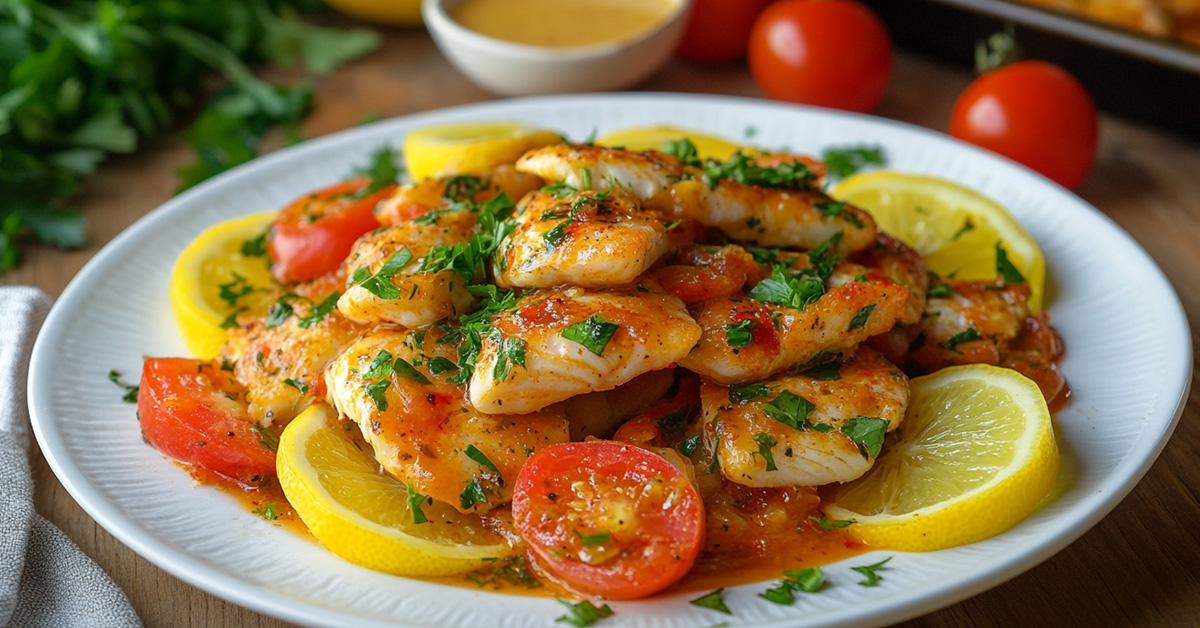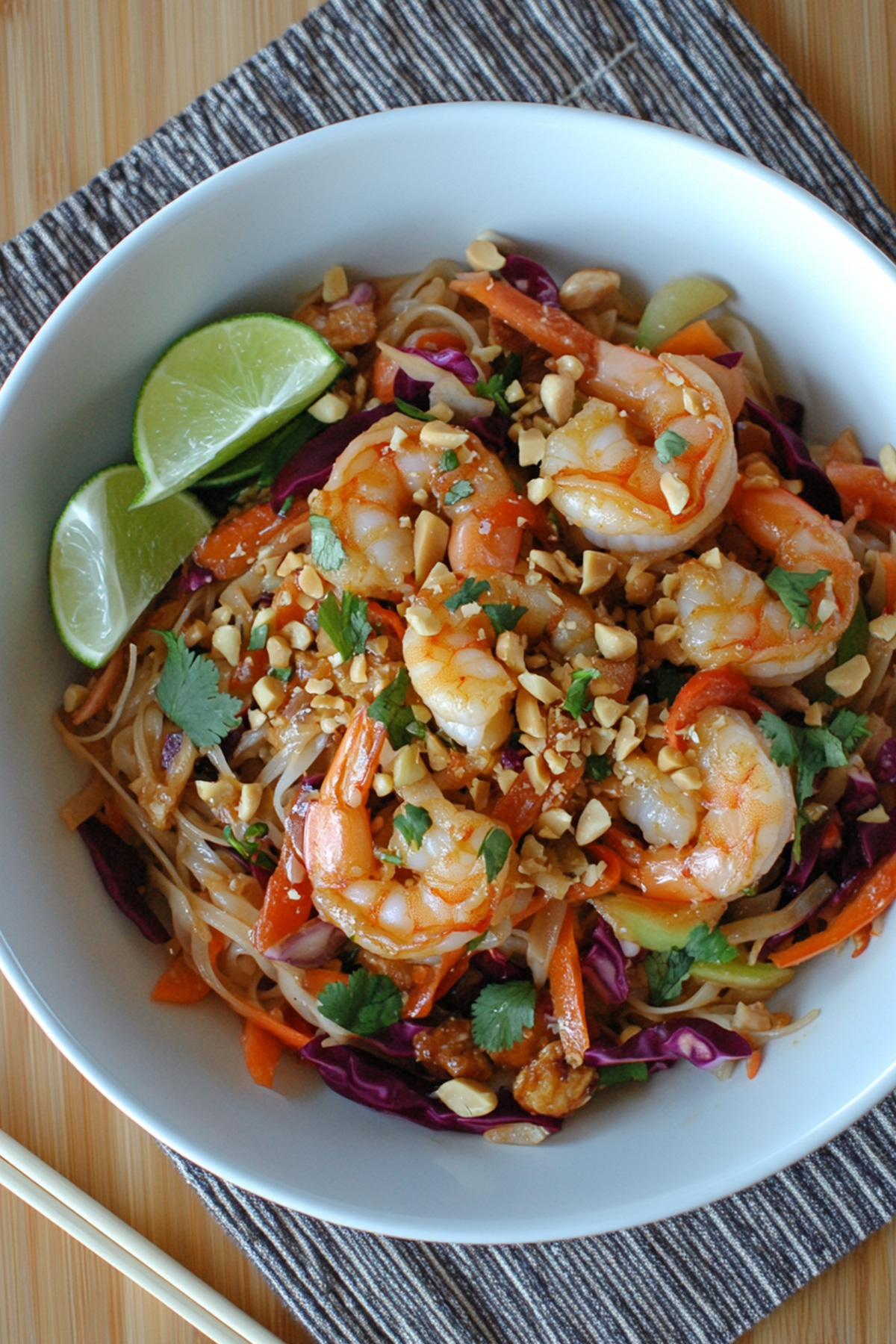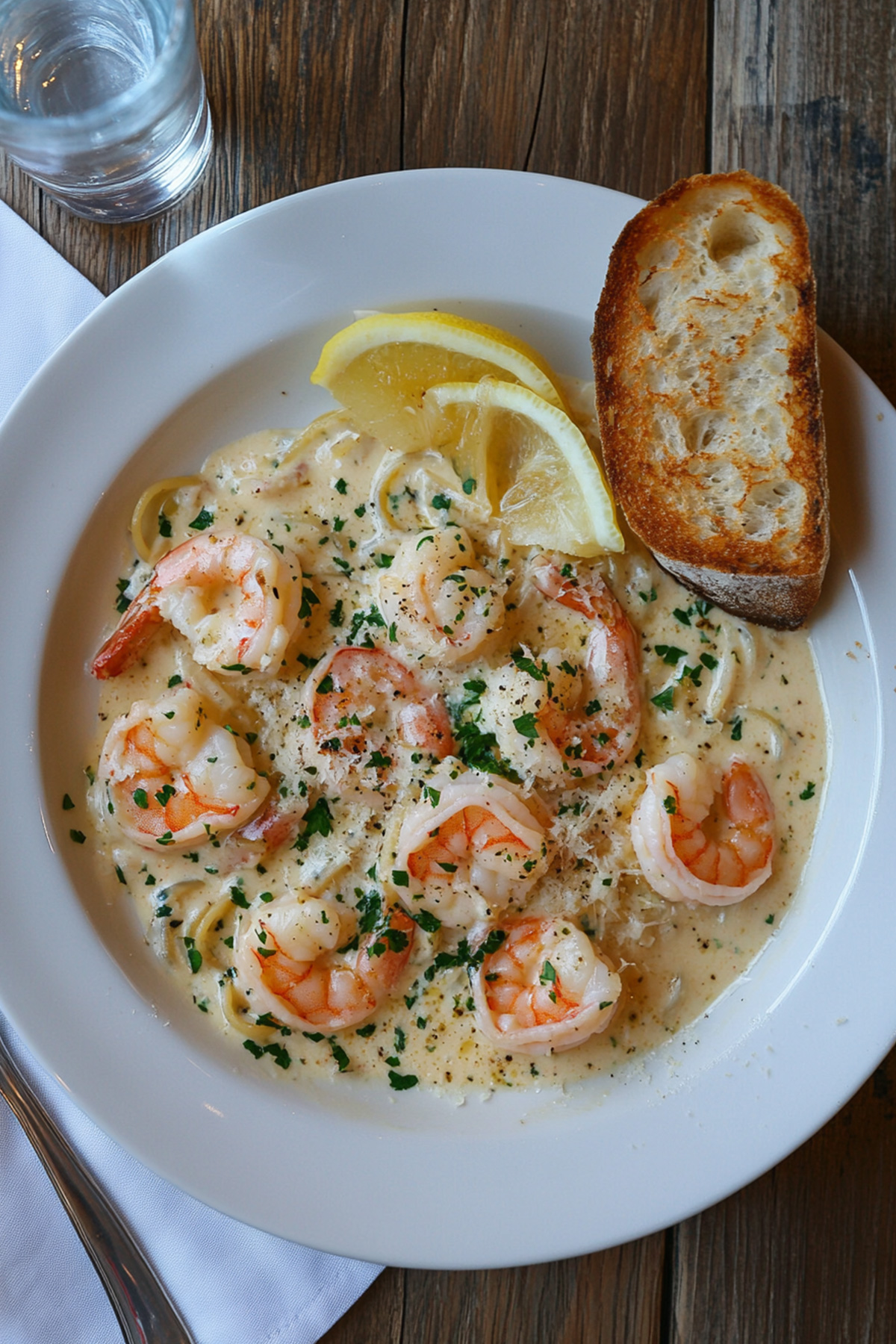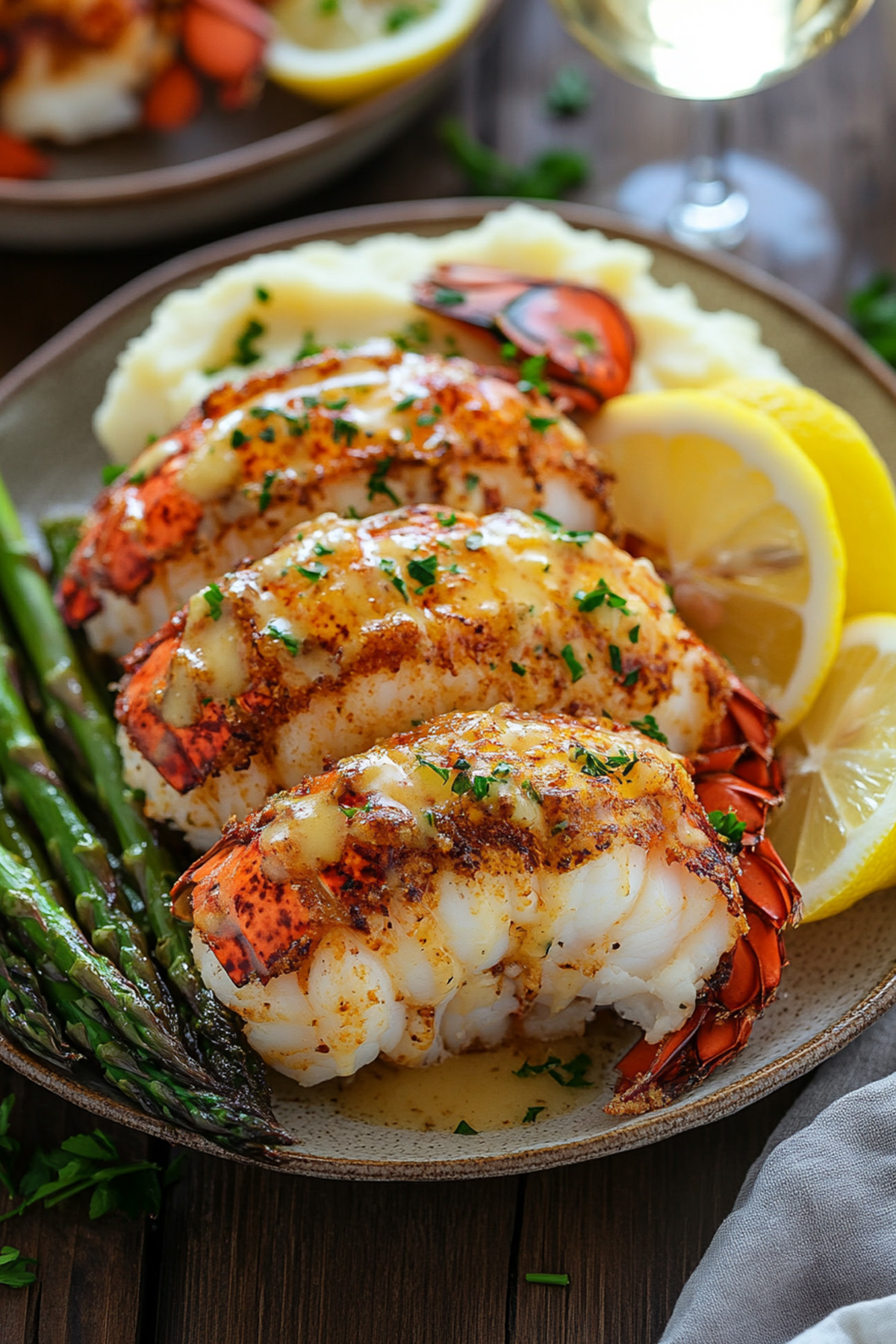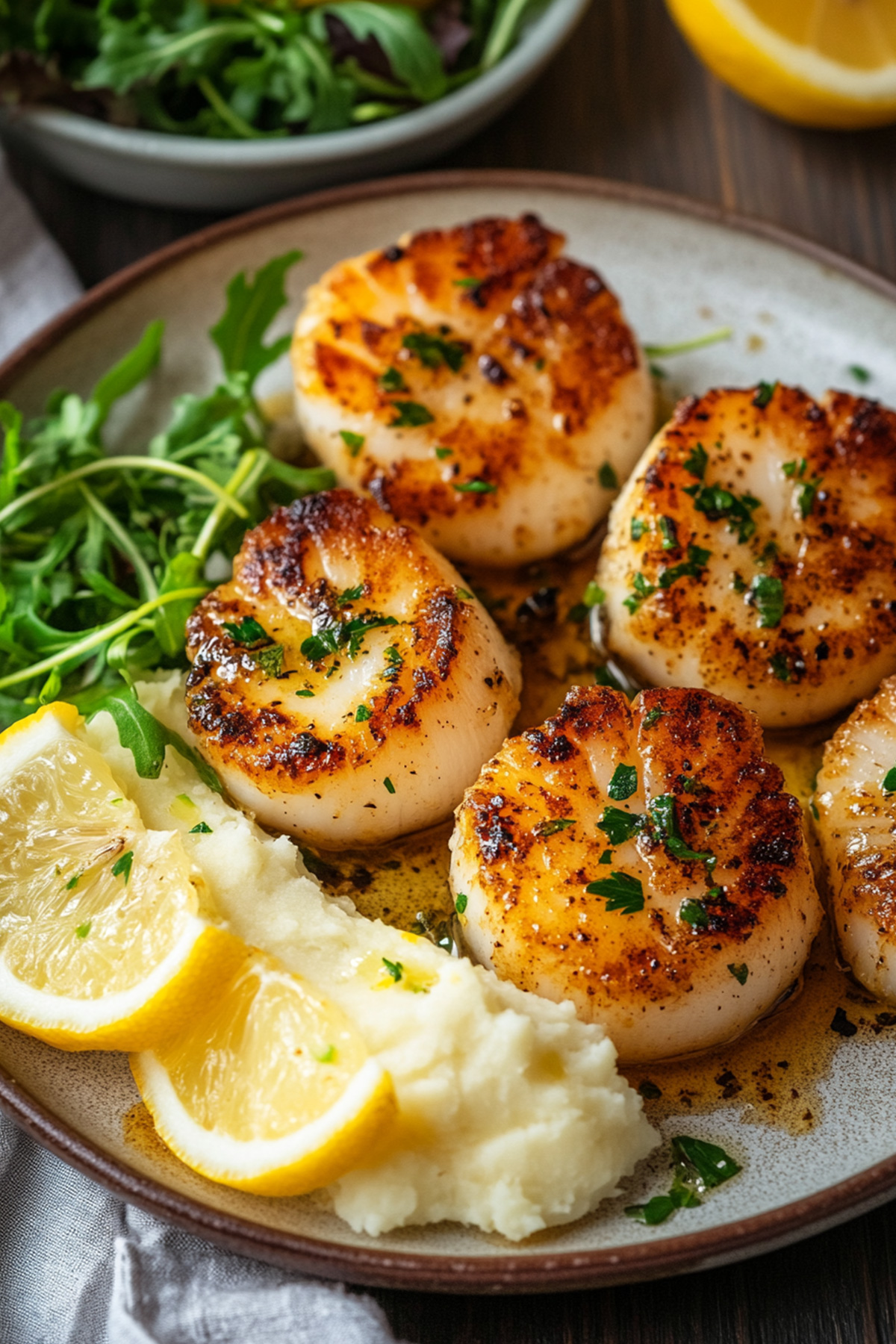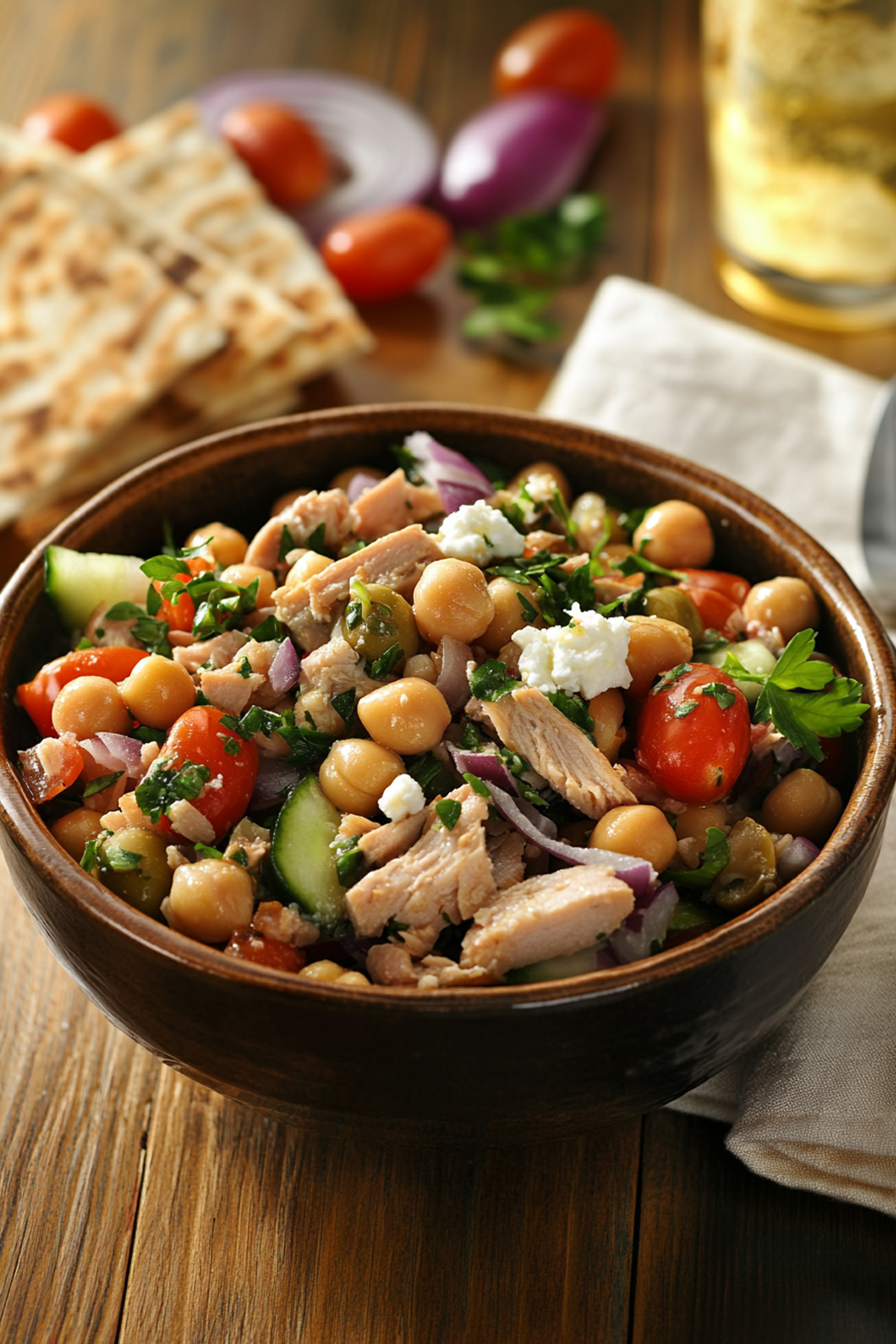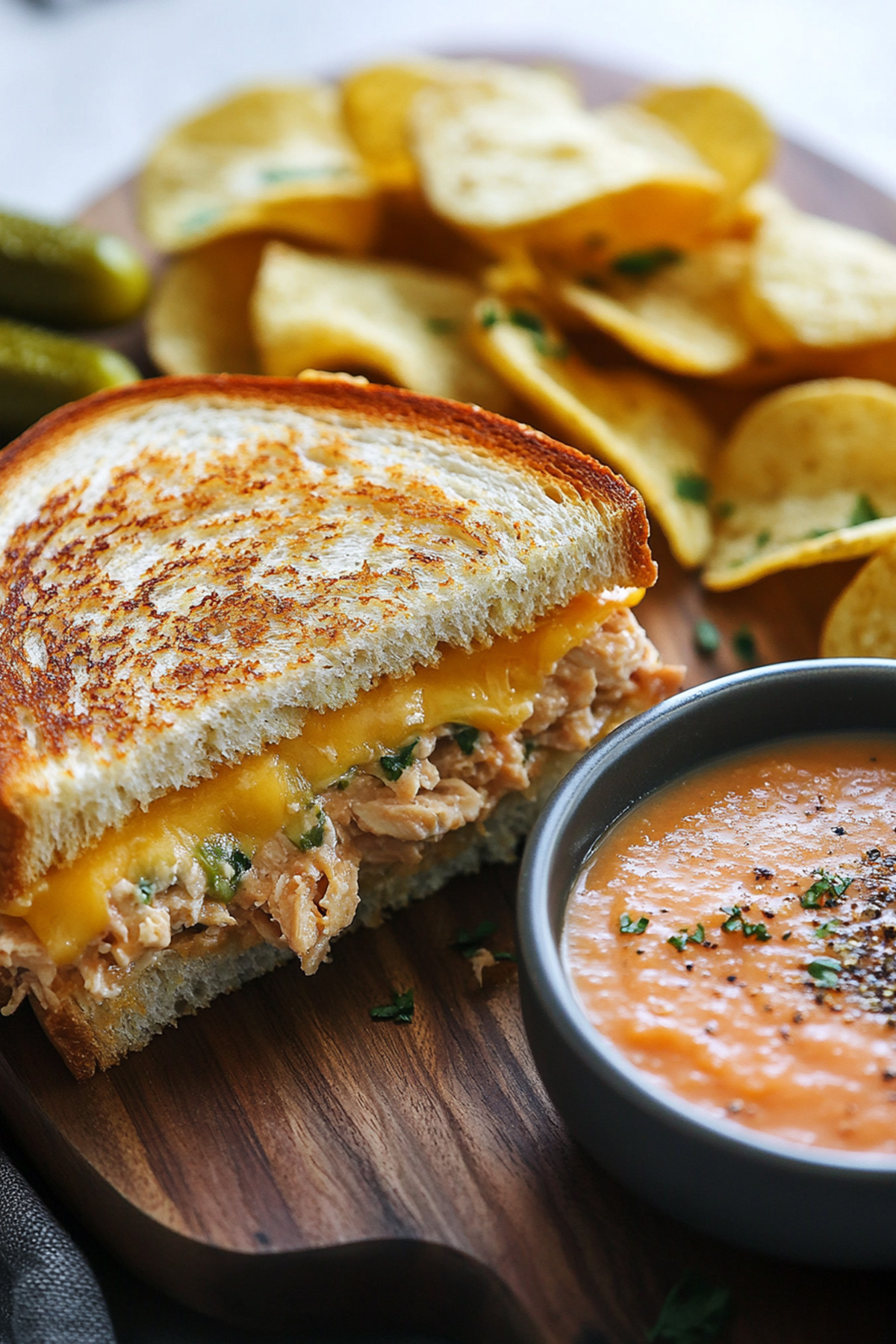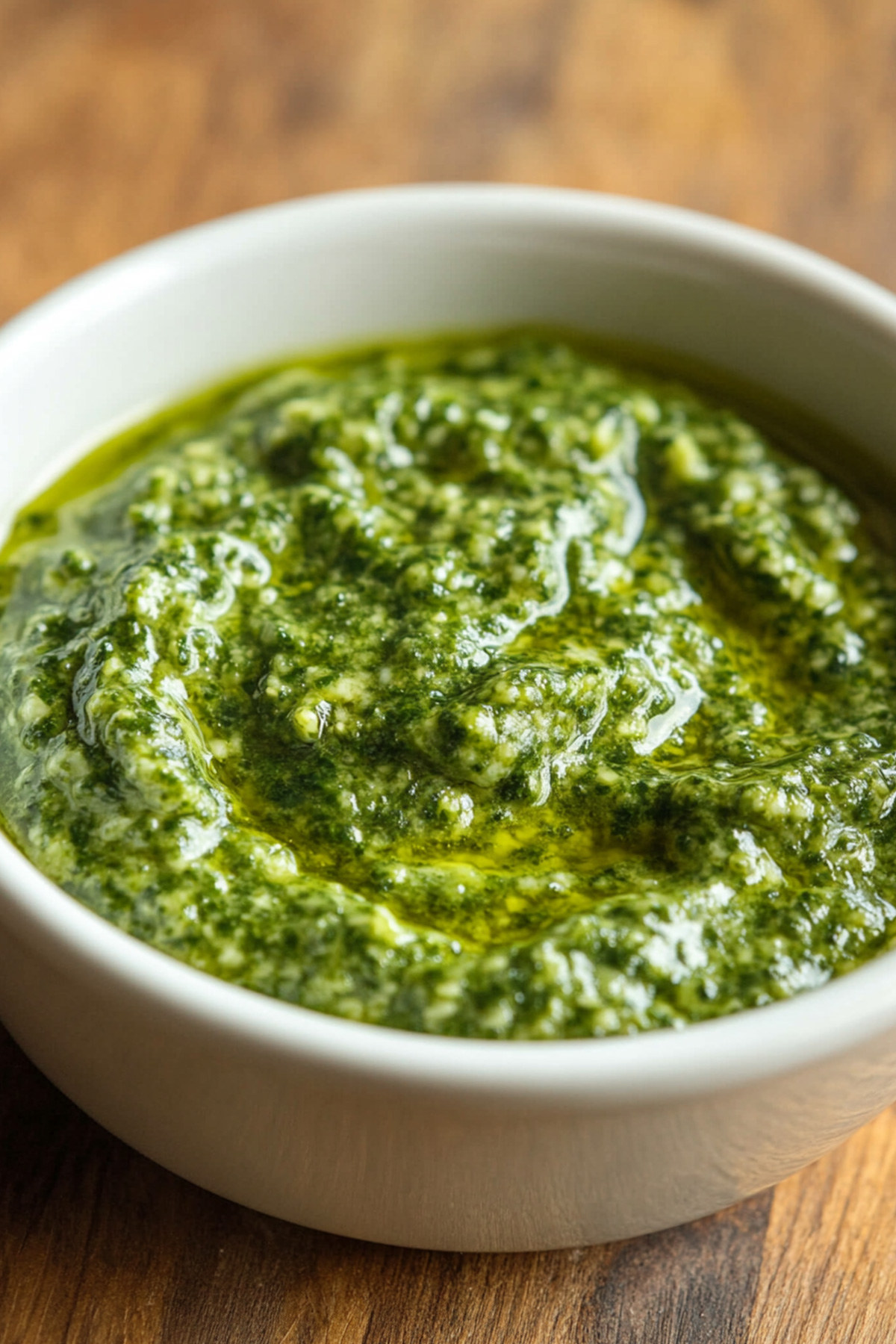Disclosure: As an Amazon Associate and participant in other affiliate programs, we earn from qualifying purchases. We only recommend products we believe will provide value to our readers.
Want a quick and tasty way to cook fish at home? Your family will love this Filipino tilapia fillet recipe that turns everyday ingredients into an amazing dish. You’ll find it surprisingly easy to make restaurant-quality fish with common ingredients and simple cooking techniques.
The recipe shows you how to prepare Filipino fish dishes perfectly. Your cooking skills will improve with helpful tips and serving ideas that make this classic pinoy fish recipe easy to prepare. The best ingredients make all the difference, and you’ll learn about getting the most nutrition from this healthy meal.
Table of Contents
What Makes Filipino Tilapia Fillet Recipes Special?
Tilapia isn’t just another fish in Filipino cuisine – it’s a canvas that creates incredible flavors! Filipino tilapia fillet recipes stand out because of their versatility and unique cooking methods that families have perfected through generations.
The traditional Filipino cooking method called ginataan uses rich coconut milk to elevate a simple tilapia fillet. This technique creates a creamy, flavorful dish that captures Filipino cuisine’s essence. Garlic, ginger, and onions blend with coconut milk to enhance the flavors and reduce the fish’s natural taste.
Filipino fish recipes shine through their distinctive cooking styles:
- Sweet and Sour (Escabeche) – balances vinegar, sugar, and colorful vegetables perfectly
- Coconut-based (Ginataang Tilapia) – bathes in creamy coconut milk with green chilies
- Sour Soup (Sinigang) – features tamarind’s unique tartness
- Vinegar-infused (Paksiw) – highlights tangy flavors with garlic
These recipes become special with patis (fish sauce) that adds that irresistible umami taste. Traditional aromatics work with it to create that authentic Filipino flavor everyone loves.
Filipino-style tilapia adapts to everything from everyday meals to festive celebrations. The fish tastes amazing whether it simmers in tangy broths, grills to perfection, or fries until golden brown. Each cooking method brings out this versatile fish’s unique character.
Similar Recipe: Sinigang Recipe
Essential Tips for Cooking the Perfect Tilapia Fillet
Want to become skilled at cooking tilapia? Let’s take a closer look at some game-changing tips that will help you prepare the perfect Filipino tilapia fillet every time!
Proper preparation is a vital first step. Your frozen tilapia should thaw completely, either overnight in the refrigerator or in a sealed bag under cold running water. Pat your fillets dry with paper towels to achieve that gorgeous golden crust!
You’ll need these items for perfect results:
- Non-stick skillet (avoid cast iron for tilapia)
- Paper towels
- Meat thermometer
- Splatter screen
- Cooking oil
Temperature control plays a key role in cooking your Filipino tilapia fillet. Heat your pan to medium-high and test it with a drop of water – it should sizzle immediately. Don’t overcrowd the pan because your fish will steam instead of sear. Each fillet needs enough space to cook evenly.
The first side needs slightly longer cooking time than the second to achieve the perfect sear. The edges should become opaque before flipping, which prevents sticking and will give a more even cook. Your fish should reach an internal temperature of 135-140°F for moist, tender results.
The heat might need adjustments. Lower the heat to medium if your fish browns too quickly on the outside while staying raw inside. This temperature flexibility matters especially when preparing traditional fish recipes pinoy style.
Timing matters with seasoning. Season your fillets just before they hit the pan. Salt won’t draw out excess moisture this way, helping you achieve that perfect golden crust.
A final tip: your fish needs to stay still while cooking. This undisturbed time helps develop that beautiful crust, so flip it only once during cooking.

Filipino Tilapia Fillet Recipe
- Total Time: 50 minutes
Description
Make your kitchen a Filipino culinary haven with this delightful tilapia fillet recipe that combines citrus, herbs, and traditional Filipino flavors perfectly.
A modern spin on traditional Filipino grilled fish, this baked tilapia fillet brings together bright citrus flavors and fresh herbs in a rich marinade. The dish works beautifully for quick weeknight meals and can elevate your special occasions!
Ingredients
- 2–3 pounds tilapia fillets
- 6 tablespoons vegetable oil (divided)
- 1 whole lemon, sliced
- 1 tablespoon lemon juice
- 2 large tomatoes, sliced
- 1 white onion, sliced
- 1 tablespoon fish sauce (patis)
- 1/2 teaspoon salt
- 1 teaspoon black pepper powder
- 1/2 cup fresh parsley, chopped
- 1/2 cup vegetable broth
- 1/2 teaspoon paprika powder
Instructions
- Marinate the Fish: Take a fork and pierce the fillets. Mix them with 3 tablespoons oil, lemon juice, fish sauce, chopped onions, paprika, salt, and pepper. Let them rest in the refrigerator for 20-25 minutes.
- Prepare the Oven: Set your oven temperature to 350°F (175°C). Take a 9×13 inch baking pan and brush it with the remaining oil.
- Arrange the Fish: Set the fillets in the pan carefully. Make sure they don’t overlap. Scatter tomatoes and lemon slices around them.
- Season and Bake: The broth should go over the fish. Cover everything with foil and bake for 25 minutes. The fish will be cooked through and tender.
- Finish and Serve: Take the pan out of the oven. Add fresh parsley on top and give it a final squeeze of lemon juice. Your dish is ready to serve.
Notes
- Any white fish fillet works well as a substitute when tilapia is unavailable.
- Place fillets separately on the baking sheet to cook evenly.
- A dash of paprika enhances the flavor before serving.
- The dish tastes best when served hot.
- Prep Time: 25 minutes
- Cook Time: 25 minutes
- Category: Seafood
- Method: Baking
- Cuisine: Asian
Serving Suggestions for Filipino Tilapia Fillet Recipe
Make your Filipino tilapia fillet recipe even better with perfect side dishes that complement its delicate flavors! This versatile fish knows how to pair wonderfully with both traditional Filipino sides and modern accompaniments.
Your tilapia fillet tastes amazing when served over steaming Java rice or paired with stir-fried vegetables. This combination creates a perfect balance of flavors and textures that makes every meal memorable.
Here are some delicious sides to keep things light and fresh:
- Kamote tops ensalada (sweet potato leaves salad)
- Grilled eggplant with salted egg and tomato salad
- Fresh corn and cabbage slaw
- Roasted seasonal vegetables
- Potato salad with a Filipino twist
The perfect fish recipes pinoy style needs the right condiments. Your tilapia becomes authentically Filipino with a side of toyomansi (soy sauce with calamansi). A fusion twist with fresh ranch dressing or tartar sauce adds an interesting dimension to your meal.
Caramelized onion mashed potatoes or wild rice pilaf make heartier options that complement your tilapia perfectly. These starchy sides soak up the delicious fish sauce wonderfully.
Stir-fried broccoli and snap peas create a nutritious and complete meal. These crispy vegetables provide excellent textural contrast to your tender fish fillet and add important nutrients to your plate.
Note that tilapia’s mild flavor makes it incredibly versatile, so experiment freely with different side dishes. Your Filipino fish recipes will taste amazing with any of these accompaniments, whether you crave something light and fresh or rich and satisfying.
Health Benefits of Eating Tilapia Fillet
Adding tilapia fillet to your diet can boost your overall health by a lot. This popular fish shows up often in Filipino fish recipes and offers amazing health benefits that make it perfect for your weekly meals.
The high-quality protein in tilapia does wonders for your body. Each serving contains about 26 grams of protein that helps build and maintain muscle while supporting tissue repair. These benefits are especially important when you have an active lifestyle and want to stay healthy.
Tilapia supports heart health effectively. Though it has nowhere near the omega-3 content of fatty fish like salmon, it provides more heart-healthy benefits than other protein sources. These beneficial fats help you:
- Lower your blood pressure
- Reduce triglyceride levels
- Decrease the risk of irregular heartbeats
- Slow down plaque buildup in arteries
Good news for weight watchers – tilapia is naturally low in calories yet keeps you feeling full. This protein-rich fish helps you stay satisfied longer, which makes maintaining a healthy weight easier without feeling hungry.
Your bones get stronger too! Tilapia’s calcium and vitamin D content strengthens bones and maintains muscle strength. The selenium in it acts as a powerful antioxidant that protects your cells from damage and boosts your immune system.
Tilapia becomes even more attractive because of its safety profile. Farm-raised tilapia from controlled environments typically has lower mercury levels than other fish species. This makes it a safe choice for everyone, especially pregnant women, nursing mothers, and young children.
Reference 1: Healthline
Reference 2: WebMD
Note that proper preparation helps you get the most health benefits. Following our Filipino tilapia fillet recipe preserves these valuable nutrients while creating a tasty meal.
Nutritional Value of Filipino Tilapia Fillet Recipe
This Filipino tilapia fillet recipe is a true nutritional powerhouse. The nutritional facts will help you plan your meals better.
A single serving of this mouthwatering fish recipes pinoy classic contains 249.5 calories, which fits perfectly into a balanced diet. Here’s what you get in each serving:
| Nutrient | Amount | Daily Value* |
|---|---|---|
| Proteins | 20.0g | 40% |
| Fat | 17.9g | 23% |
| Carbohydrates | 2.5g | 1% |
| Dietary Fiber | 0.7g | 3% |
Each bite packs these essential minerals:
- Calcium: 90.6mg to build stronger bones
- Iron: 4.5mg that helps carry oxygen through your body
- Sodium: 359.5mg to maintain fluid balance
- Potassium: Works as a vital electrolyte
This tilapia fillet recipe stands out because of its high protein content and low carbohydrates. You can enjoy this dish regardless of your dietary priorities – whether you want to maintain muscle mass or limit your carb intake.
The actual values might differ based on your cooking method and serving size. Additional ingredients in your Filipino fish recipes can also affect the final nutritional content.
*These values reference a 2,000 calorie daily diet. Your needs may differ based on your body’s requirements.
Popular Filipino Fish Recipes Similar to Tilapia Fillet
Filipino tilapia fillet recipes are just the beginning of an amazing culinary journey! The Philippines has many more fish preparations that share the cooking techniques and flavors you love.
Daing na Bangus feels like a natural next step from tilapia dishes. This butterflied milkfish gets a vinegar-garlic marinade and turns wonderfully crispy in the pan. It pairs perfectly with garlic rice to start your day.
Several fish varieties work great in Filipino recipes. Here are some excellent alternatives to tilapia:
- Catfish – offers a firm texture and mild flavor
- Striped Bass – provides a similar flaky texture
- Red Snapper – matches tilapia’s moistness and mild taste
- Rainbow Trout – brings a subtle buttery flavor
Kinilaw might become your next favorite dish – it’s the Filipino take on ceviche. The traditional version uses raw fish, but you can adapt it with lightly seared pieces in a tangy vinegar dressing with ginger and chilies.
Pinangat gives coconut milk lovers two amazing versions:
| Style | Key Ingredients |
|---|---|
| Sour Version | Fish, bilimbi, tamarind |
| Bicol Version | Coconut milk, taro leaves, chili |
Kinunot captures Filipino cuisine’s essence by blending fish with coconut milk, malunggay leaves, and chili peppers. This creamy yet spicy dish hits all the right notes.
Bangus sa tausi showcases the beautiful fusion of Filipino and Chinese flavors. The fish cooked in savory black bean sauce might just become your new go-to dish.
You may like: Breaded Grilled Fish
Filipino Tilapia Fillet Recipe FAQs
Curious about making Filipino tilapia fillet? Here are answers to questions you might have!
What’s the quickest way to control cooking odors when frying tilapia?
Your backyard makes a perfect cooking spot during summer months. Indoor cooking needs open windows and an exhaust fan running. The aroma usually fades away in a few hours.
Can I substitute tilapia with other fish in Filipino recipes?
You bet! Red snapper and mackerel blend perfectly into most Filipino fish recipes. Here’s a quick guide to cooking times:
Tilapia: 8-10 minutes
Red Snapper: 10-12 minutes
Mackerel: 7-9 minutes
What’s the traditional way to enjoy fried tilapia?
Filipino culture embraces eating with hands (kamayan style). The fish pairs beautifully with rice mixed with fish sauce. A fresh tomato on the side adds zest – take a bite of tomato between mouthfuls of fish and rice!
How can I make my tilapia more flavorful?
These tested methods work great:
– Score both sides of the fish before seasoning
– Let salt penetrate for 10 minutes before cooking
– Use aromatics like garlic, ginger, and onions
– The fish tastes richer when cooked in coconut milk
What’s the secret to perfectly crispy fried tilapia?
A wire rack helps drain excess oil after frying. This simple trick will give your fish recipes pinoy style that perfect crunch.
Can I use frozen tilapia fillets?
Absolutely! The fillets need complete thawing before cooking. The best results come from overnight thawing in your refrigerator. Short on time? The cold water method works too.
Note that becoming skilled at these Filipino fish recipes takes practice. Each attempt brings you closer to finding your perfect cooking style!
Conclusion
Filipino tilapia fillet recipes combine old cooking traditions with modern kitchen methods. Both new and experienced home cooks will find these recipes easy to follow. This detailed guide shows you how to prepare delicious tilapia dishes. You’ll learn everything from picking ingredients to cooking techniques. Tilapia works well with different Filipino cooking styles. The fish tastes great in creamy ginataan or tangy escabeche.
Tilapia offers excellent nutrition and health benefits for everyday meals. The fish’s versatility lets you create endless dishes in your kitchen. With the right techniques and authentic Filipino flavors, you can make restaurant-quality meals at home. These dishes celebrate Filipino cuisine’s rich heritage. Try these recipes today and find out why Filipino tilapia dishes remain special in family dining traditions

